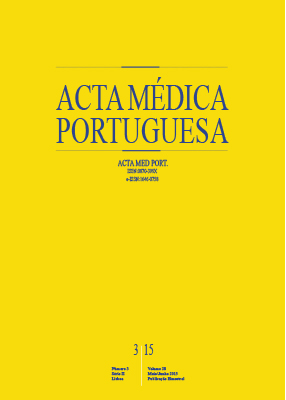The Role of Haemoglobin A1c in Screening Obese Children and Adolescents for Glucose Intolerance and Type 2 Diabetes
DOI:
https://doi.org/10.20344/amp.5494Keywords:
Adolescent, Child, Diabetes Mellitus, Type 2, Glucose Intolerance, Haemoglobin A, Glycosylated, Mass Screening, Obesity, Pediatric Obesity.Abstract
Introduction: In 2012, an international expert committee in diabetes wrote in favor of screening adult and paediatric patients for glucose intolerance and type 2 diabetes using glycated haemoglobin. The aim of this study was to evaluate glycated haemoglobin utility as a screening tool in a young obese mainly Caucasian population.Material and Methods: Children [(n = 266), body mass index z-score 3.35 ± 0.59, 90% Caucasian 90%, 55% female, median age 12.3 (range: 8.9 - 17.6) years old] recently referred to a tertiary hospital-based obesity clinic underwent a routine oral glicose tolerance test and glycated haemoglobin measurement. Exclusion criteria: abnormal forms of haemoglobin and conditions linked to increased erythrocyte turnover.
Results: The oral glicose tolerance test diagnosed 13 (4.9%) subjects as prediabetic but none as diabetic. According to glycated haemoglobin, 32 would be prediabetic (29 false positives) and one would be diabetic (when he was only glucose intolerant). On the other hand, 10 prediabetic patients would not have been identified (false negatives). Glycated haemoglobin receiver operator characteristic analysis area under the curve was 0.59 (CI 95% 0.40 - 0.78), confirming its reduced capacity to identify prediabetes. Better results were achieved when calculating receiver operator characteristic analysis area under the curve for fasting glucose (0.76;
CI 95% 0.66 - 0.87), homeostasis model assessment for insulin resistance (0.77; CI 95% 0.64 - 0.90) and triglycerides:HDL cholesterol ratio (0.81; CI 95% 0.66 - 0.96).
Discussion: In Paediatric populations, especially when mainly Caucasian, glycated haemoglobin does not seem to be a useful
screening tool for prediabetes.
Conclusion: For this reason, it would appear premature to advise it as a diagnostic tool until significantly more data is available. Homeostasis model assessment for insulin resistance and triglycerides: HDL cholesterol have higher precision and can be calculated using a fasting blood sample.
Downloads
Downloads
Published
How to Cite
Issue
Section
License
All the articles published in the AMP are open access and comply with the requirements of funding agencies or academic institutions. The AMP is governed by the terms of the Creative Commons ‘Attribution – Non-Commercial Use - (CC-BY-NC)’ license, regarding the use by third parties.
It is the author’s responsibility to obtain approval for the reproduction of figures, tables, etc. from other publications.
Upon acceptance of an article for publication, the authors will be asked to complete the ICMJE “Copyright Liability and Copyright Sharing Statement “(http://www.actamedicaportuguesa.com/info/AMP-NormasPublicacao.pdf) and the “Declaration of Potential Conflicts of Interest” (http:// www.icmje.org/conflicts-of-interest). An e-mail will be sent to the corresponding author to acknowledge receipt of the manuscript.
After publication, the authors are authorised to make their articles available in repositories of their institutions of origin, as long as they always mention where they were published and according to the Creative Commons license.









